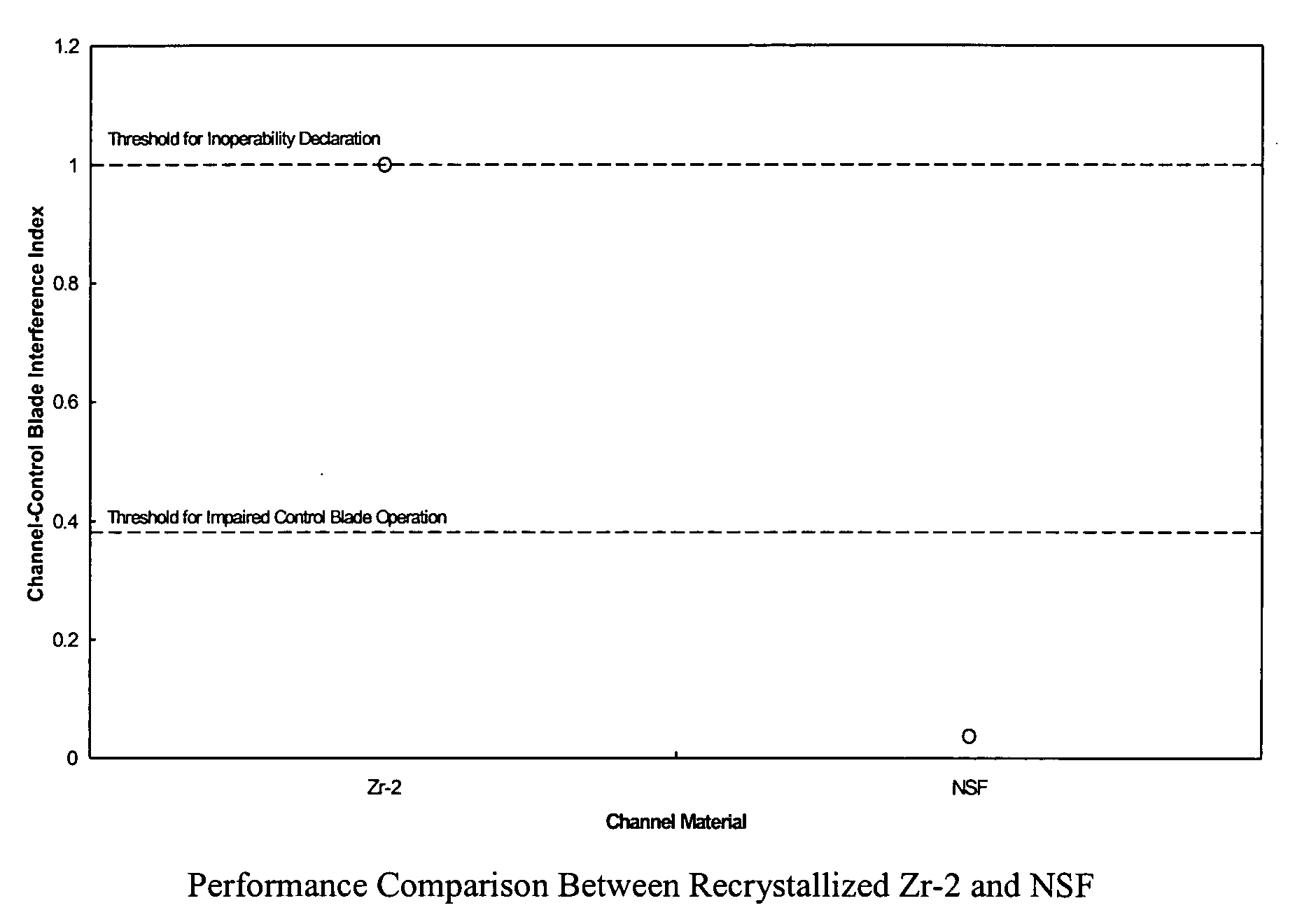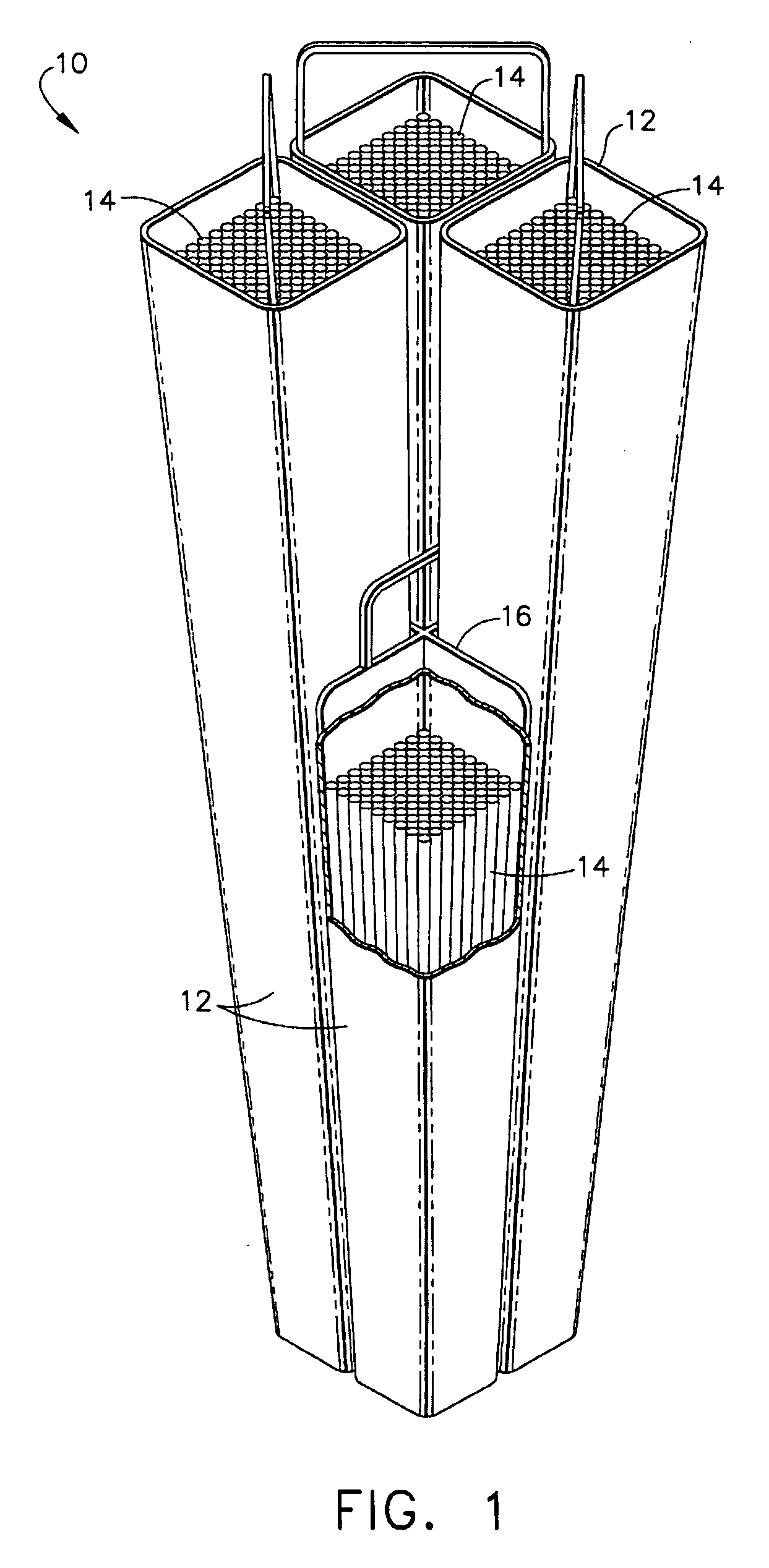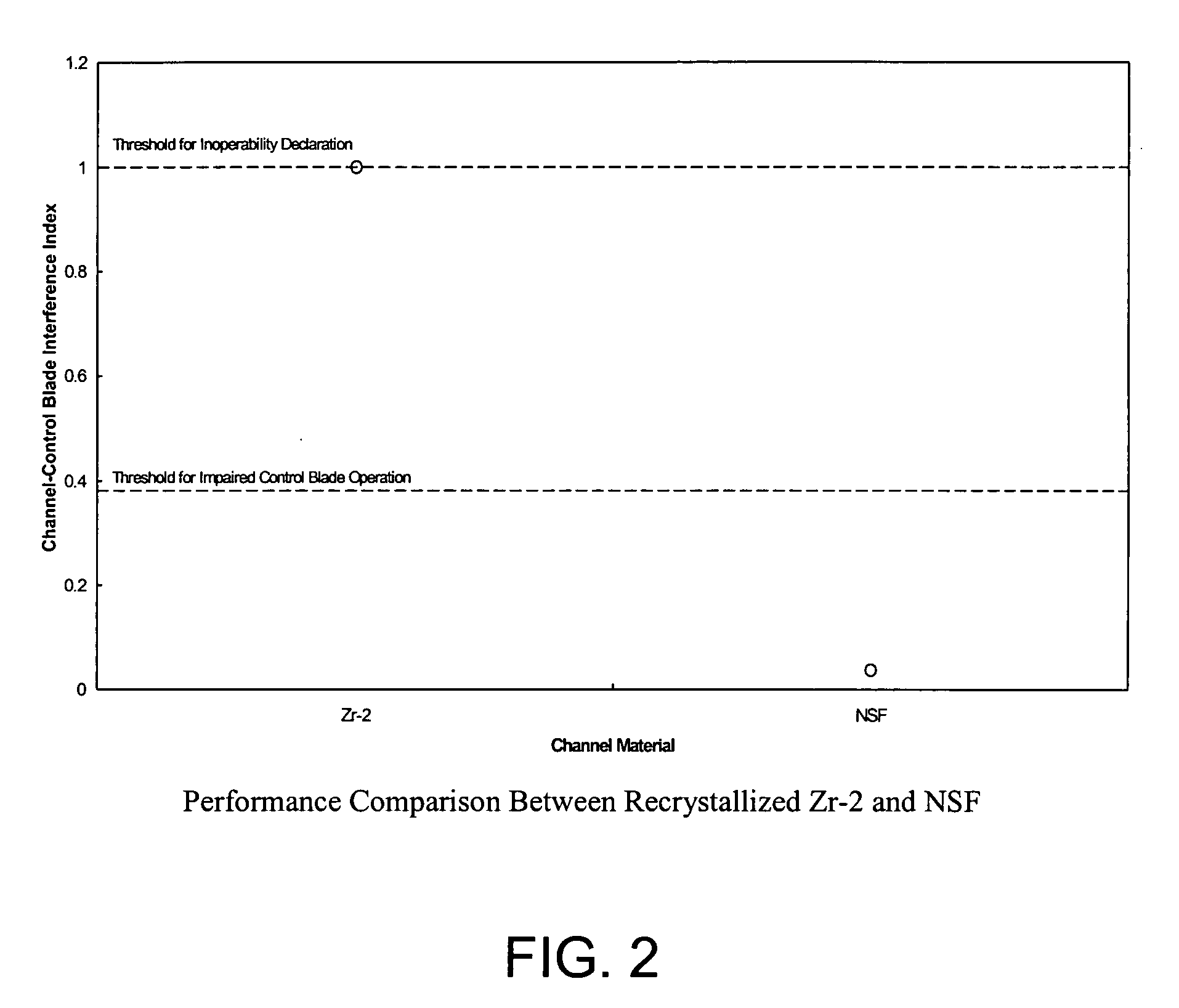LWR flow channel with reduced susceptibility to deformation and control blade interference under exposure to neutron radiation and corrosion fields
a flow channel and neutron radiation technology, applied in the direction of greenhouse gas reduction, nuclear reactors, nuclear elements, etc., can solve the problems of affecting the service life of the boiling water reactor (bwr) fuel channel, the flow channel is deformed, and the control blade is affected by shadow corrosion, so as to reduce the likelihood of deformation, reduce the sensitivity to cold work induced irradiation growth acceleration, and improve the effect of properties
- Summary
- Abstract
- Description
- Claims
- Application Information
AI Technical Summary
Benefits of technology
Problems solved by technology
Method used
Image
Examples
example 1
[0067] Operating of a fuel channel (flow box) in the outer regions of a BWR core results in a gradient of accumulated fast fluence in opposite channel faces. This differential fast fluence accumulation, in turn, results in differential irradiation growth of the opposite channel faces that tends to deform, specifically to bow, the channel. If the bowing of the fuel channel becomes excessive, the control rod positioned between adjacent channels can become “pinched” or bound between the two channels to a degree sufficient to impair control rod motion. In extreme cases, this friction force can be sufficient to cause the control rod to become inoperable, i.e., to freeze, the control rod.
[0068] Because the control rod provided in conjunction with an array of fuel rods performs an important safety function, its ability to operate all control rods at all times through their full range of motion is an important safety and operational consideration. Considering an operating history of a conv...
example 2
[0070] Alloy E635 is known within the nuclear industry as a low irradiation growth alloy, and therefore offers the performance advantages of a low growth alloy. However, the irradiation growth performance of NSF has been proven superior to alloy E635. Based on test reactor irradiations and corresponding irradiation growth measurements taken at multiple times during irradiation, the relative performance of NSF and E635 is known. Channel bow is determined by the rate of change of irradiation growth during the later periods of the operating lifetime of the channel. Comparing the measured rate of change of irradiation growth of alloy E635 and NSF over the same accumulated fast fluence interval that corresponds to the latter ˜50% of the channel lifetime, the relative channel bow performance of NSF and E635 can be determined. FIG. 3 presents this performance comparison. In FIG. 3, a lower value of the performance index represents less channel bow and correspondingly improved performance. ...
example 3
[0071] Channel fabrication requires the application of processing steps that can induce cold work into the material. Historically, instances have occurred with Zircaloy-2 channels where an excessive amount of cold work resulted in irradiation growth induced dimensional instability of sufficient magnitude to result in significant channel bow and impaired control rod motion. Based on the measured irradiation growth characteristics of recrystallized Zircaloy-2 and NSF, an assessment similar to that presented in FIG. 3 can be performed. FIG. 4 presents the results of that assessment indicating the substantial inherent tolerance of the NSF material to the effects of cold work of the magnitude that has caused significant channel performance effects with recrystallized Zircaloy-2.
PUM
 Login to View More
Login to View More Abstract
Description
Claims
Application Information
 Login to View More
Login to View More - R&D
- Intellectual Property
- Life Sciences
- Materials
- Tech Scout
- Unparalleled Data Quality
- Higher Quality Content
- 60% Fewer Hallucinations
Browse by: Latest US Patents, China's latest patents, Technical Efficacy Thesaurus, Application Domain, Technology Topic, Popular Technical Reports.
© 2025 PatSnap. All rights reserved.Legal|Privacy policy|Modern Slavery Act Transparency Statement|Sitemap|About US| Contact US: help@patsnap.com



